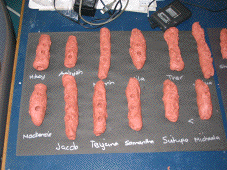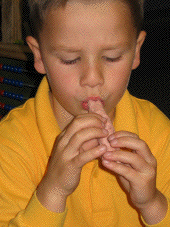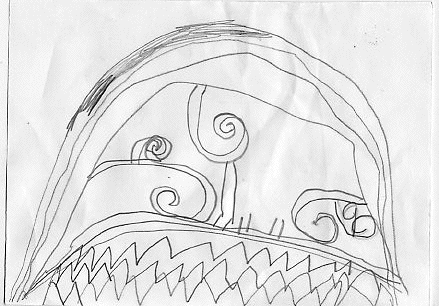Our Lady of Lourdes School
Lasting Legacy - Maori Flutes
Research Process
Tuning in
- listening to a range of traditonal and modern Maori music
- finding out about musical instruments that are held in our own families
- noticing where we have seen Maori flutes, eg in the shop window by the Central Library, in a case in the library and at Te Manawa.
Wonderings - Brainstorm process
As individuals, pairs and then the whole class short periods of time were taken to think about instruments and then Maori instruments. The teacher recorded ‘We think we know’ and then ‘I wonder’ statements and questions. The process was kept short and all thoughts acknowledged as this was a starting point for what the children wished to find out more about.

Mapping/Key Wording/Key questions - rich questions using the key words of music, Maori, flute, make/create, play and instrument. Children think about the questions they are asking and who would be a good audience for them to present their findings to.

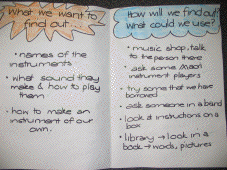
Many of the resources sourced were audio or visual to allow, with guidance, the children to come to their own ‘answers’ to their questions. A list of the key resources used is included on our 'credits' page. As part of the ‘finding out’ phase of learning, a group of children wondered what a ‘normal’ flute sounded like so a flute and player were invited to perform for the class.
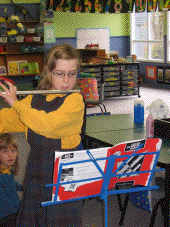
Listen to a short piece she played.
It was hoped that an expert Maori flute player would also visit, however due to unforseen circumstances this had to be postponed to the next school term.
Children gathered information and shared their findings with a peer and the class. The information and observations shared were then compared to other children’s discoveries to enrich the findings of all the children. With this new found knowledge about the changes in sound made by covering and uncovering the holes in a ‘normal’ flute, children noticed the holes on the pictures of flutes we were looking deeply at.
A short quicktime movie explains the simple sequence taken in class to create our own individual flutes from das clay. You may view our movie here.
This clay was chosen as the material to use even though it is not a ‘traditional’ choice, because it is extremely easy to mould, shape and score into.
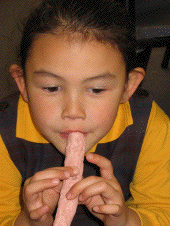
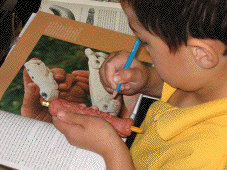
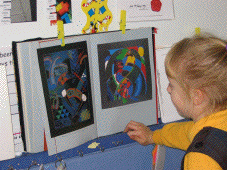
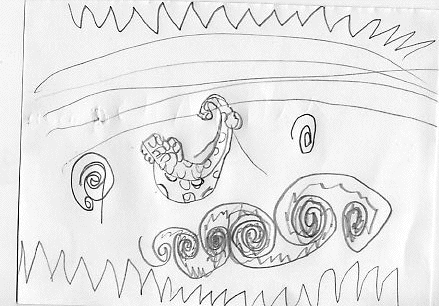
- Look deeply at pictures of flutes.
- Listen to music with flutes in it and identify the sound.
- Follow a pattern with your finger on the picture. Choose a piece to draw on a small slip of paper.
- Make 3D tube shapes from plasticine, break and make several times. Use a pencil to score the chosen pattern into the soft material.
- Reflect on the plasticine flutes; shape, mouth hole size, pattern depth, hole position. Return to the books and look carefully at the shape of the basic flute.
- Use das to create the ‘improved’ design. When shaping put a pencil inside to keep the central opening in position. Pierce holes for fingers and then gently remove the pencil.
- Leave to dry. They change to a lighter shade when they are dry.
- Provide lots of time to experiment with playing the newly created flutes.
- Tips for playing:
- wet bottom lip
- flatten bottom lip
- produce a low whistle and then bring flute to the corner of your mouth
- use determination and perseverance.
Finally, reflect on your learning, compare your flutes to the pictures you have and acknowledge the excellence used to make them and the knowledge held by the artist and musician. What are you … proud of? changes/improvements? areas for further development?
You can listen to a short piece of us beginning to learn to play our clay flutes.
